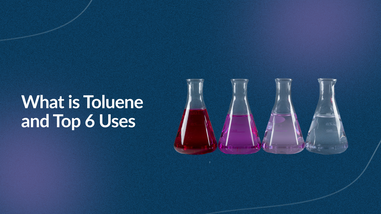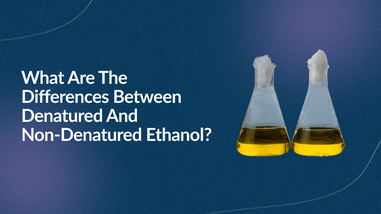- No products in the cart.
Meeting sterilization standards for a cleanroom can be a difficult task, especially when the cleanroom is new or staffed with inexperienced technicians. Before a cleanroom can start to work toward meeting sterilization standards, however, the staff will need to choose a sterilizing alcohol to use for everyday maintenance of a sterile environment.
There are a handful of choices for a sterilizing alcohol, including ethanol, isopropyl alcohol (isopropanol or IPA), and butyl alcohol (butanol). While it’s theoretically possible for each of these three alcohols to provide a sterile environment in the cleanroom, the differences between isopropanol and butanol may be the most compelling to understand. Rather than stocking a hodgepodge of alcohols, the most efficient cleanrooms will retain the appropriate amount of each with the knowledge that there are a number of tradeoffs to pay attention to when choosing one to carry the brunt of the daily sterilization work burden.
Isopropyl Alcohol (IPA) in the Cleanroom
Isopropyl alcohol (IPA) is a workhorse sterilizer and solvent for cleanrooms within biomedicine and semiconductor manufacturing. While ethanol is used more widely than isopropyl in many biomedical cleanroom contexts, for the purposes of sterilization isopropyl alcohol is likely to be marginally more effective, albeit more expensive. Most labs are stocked with isopropyl alcohol wipes, which are useful as a first-line sterilizer as well as a handy cleaning tool for bulk decontamination.
Most laboratories with cleanrooms should keep a substantial stockpile of isopropyl alcohol on hand at all times. Furthermore, this stockpile should contain isopropyl alcohol in different formats so that it can be used as needed. Jugs of isopropyl alcohol typically constitute the reservoir and long-term storage format, whereas soaked wipes, spray-nozzle bottles, squirt bottles, small reagent bottles, and filled vials should also be ready for use. In particular, spray-nozzle bottles and squirt bottles filled with isopropanol do a lot of the heavy lifting of daily sterilization in many cleanrooms.
For instance, to clean a biosafety cabinet or benchtop, many laboratories dictate that technicians should spray all of the surfaces down with isopropyl alcohol, then distribute the liquid evenly with a piece of gauze or sterile towel. One technician might perform this task several times a day, meaning that they will go through a lot of isopropyl alcohol if they are following procedure. Sterilization aside, wiping down cleanroom surfaces with isopropyl alcohol ensures that any leftover adhesives or other unwanted chemicals from a prior experiment are dissolved and removed before the next technician works in the area. Many cleanrooms also use aspiration flasks pre-filled with a modest volume of isopropyl alcohol to ensure that any aspirated waste is exposed to the sterilizing alcohol immediately after.

Butyl Alcohol in the Cleanroom
Butyl alcohol is an alternative sterilizing alcohol which is largely less effective than isopropanol. Butyl alcohol has a few properties which make it difficult to work with in a cleanroom environment:
- Relatively high viscosity
- Poor miscibility in water
- Bad banana-like odor
In particular poor miscibility in water makes butyl alcohol a worse sterilizer than isopropyl alcohol (IPA). While isopropyl alcohol can be made into a 70% solution using water, butyl alcohol can only reach about 10% before crashing out of solution at the bottom of the vessel. This means that to reach the threshold value of alcohol exposure necessary for sterilization, an abundance of butyl alcohol will need to be applied to each surface and left there for an extended period before sterilization is complete. Notably, butyl alcohol is rarely used to sterilize cleanroom surfaces unless there is a compelling logistical or experimental reason not to use isopropanol or ethanol instead.
Furthermore, if the butyl alcohol is applied liberally to a surface, it will take a considerable amount of time to evaporate, even after sterilization is complete. Because it takes so long to evaporate, butyl alcohol is also inconvenient for the cleanroom staff who need to get started with work. Overall, the inefficiency of using butyl alcohol as a sterilizer means that cleanrooms will need to spend more money while also subjecting themselves to the unpleasant odor which it emits.
Which Alcohol Is Better?
For sterilization in the cleanroom, isopropyl alcohol is nearly always the better choice than butyl alcohol. Aside from evaporating faster, lacking a pungent odor, and being more effective at sterilization than butyl alcohol, isopropyl alcohol also has numerous uses in the laboratory or cleanroom outside of sterilization, unlike butyl alcohol. Isopropyl alcohol is used in DNA extractions, isolating cell types, and preparing inorganic materials for integration into cell cultures, whereas butyl alcohol is far less commonly found in experimental protocols. Likewise, even for labs without true cleanroom technology to guarantee a sterile environment, isopropyl alcohol can be part of their sterilization strategy when it is used to fuel alcohol candles to create antiseptic updrafts.
The one area where butyl alcohol has more favorable chemical properties for cleanroom use than isopropyl alcohol is fire safety. Isopropyl alcohol’s flash point is a relatively cool 11.7 degrees centigrade, whereas butyl alcohol’s flash point is a more modest 35 degrees centigrade, meaning that at a typical room temperature of 22 degrees centigrade, vapors of butyl alcohol won’t ignite if there is a spark, but vapors of isopropyl alcohol will. Most cleanrooms do not have many sources of sparking, but where protocols require the use of high heat or flame, butyl alcohol will be significantly safer to work with.
In summary, isopropanol is the preferable sterilizer for most cleanrooms on account of its superior chemical properties in the most common usage scenarios. Thus, cleanrooms that want to stay sterile as efficiently as possible will keep a large volume of isopropanol around to ensure that staff are not afraid to use it liberally during their daily cleaning. For cleanrooms which are just getting established, working with a knowledgeable supplier who understands typical utilization quantities of isopropanol will be a major asset which will ensure that the cleanroom has the alcohols it needs.
For over 40 years, Lab Pro has been committed to providing critical cleanroom supplies like isopropanol in California and worldwide. Come visit the biggest Lab Supply showroom in California, or contact us online or at 888-452-2776.












































